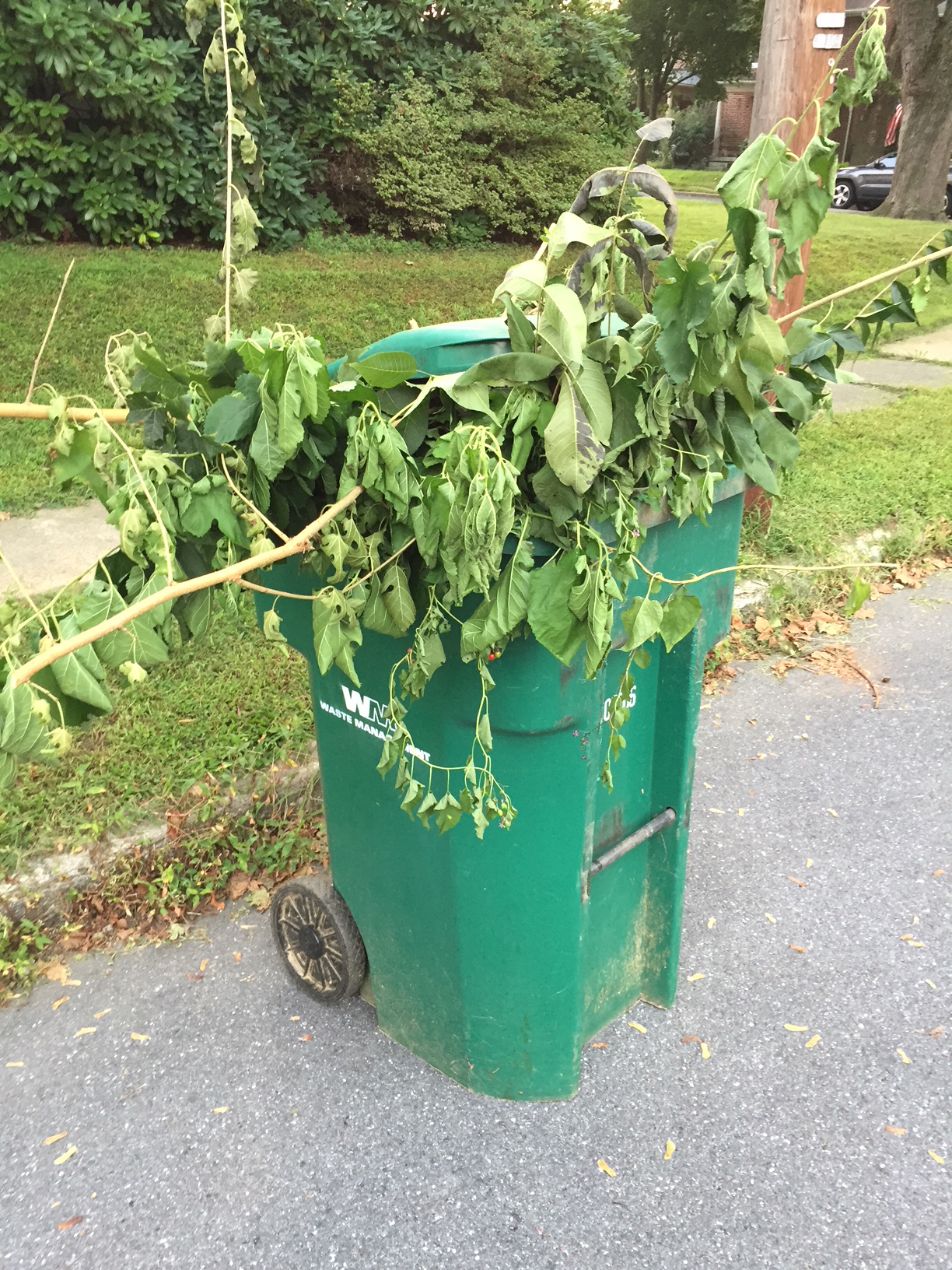
Cleanup


Here is something that happened to me just recently but has reoccurred throughout my design career. The things I care about. The things I think are cool or good or difficult or clever are not always what others think are cool, good, difficult, or clever.
Most people walk around in their own bubble of interests. Most people are not designers. If you work with a team, what matters to any particular member of the team is what that person is interested in. It may take you 15 minutes to put together that flyer, but if that flyer is promoting this team member’s project, then that is all that matters.
My advice to you is to treat everyone’s project like it’s important. Don’t down play any work you do. Don’t sell yourself short because you thought it was easy. Put your best work forward always even if it isn’t what you consider challenging or especially interested. You’re helping to interpret and sell their dream, and that’s important. Always. That’s challenging. Always. Even if you did it before.
For the hard and interesting stuff, keep a side hustle. Find a way to fit in the work that you really want to do, the work that challenges you, the work you find interesting or cool, the work that makes you feel like a pro. You also need to please yourself, and the tough stuff will do that. Make sure you fit it in even if it doesn’t pay the bills because it will feed your soul.
Another book sale find, Steal Like An Artist: 10 Things Nobody Told You About Being Creative, by Austin Kleon is a charming advice book you’d give to a special friend or a new graduate and hope they read it a few times. I placed it on my “to read” list after seeing a reference in another book, whose name escapes me.
The book has some lovely illustrations and is printed on coated paper that feels smooth and special. Kleon’s book is centered around artists but applies to all – get a side hustle. Do good work. Stay focused. Copy those you admire. Get to know those who are more talented than you. Learn from others. Make friends. Channel your free time creatively.
Kleon’s best advice is worth repeating. Enjoy captivity. You need space and time – a space to work and some self-imposed exile. “I always carry a book, a pen, and a notebook, and I always enjoy my solitude and temporary captivity.” Put the phone down. Ignore the free wi-fi, and create.
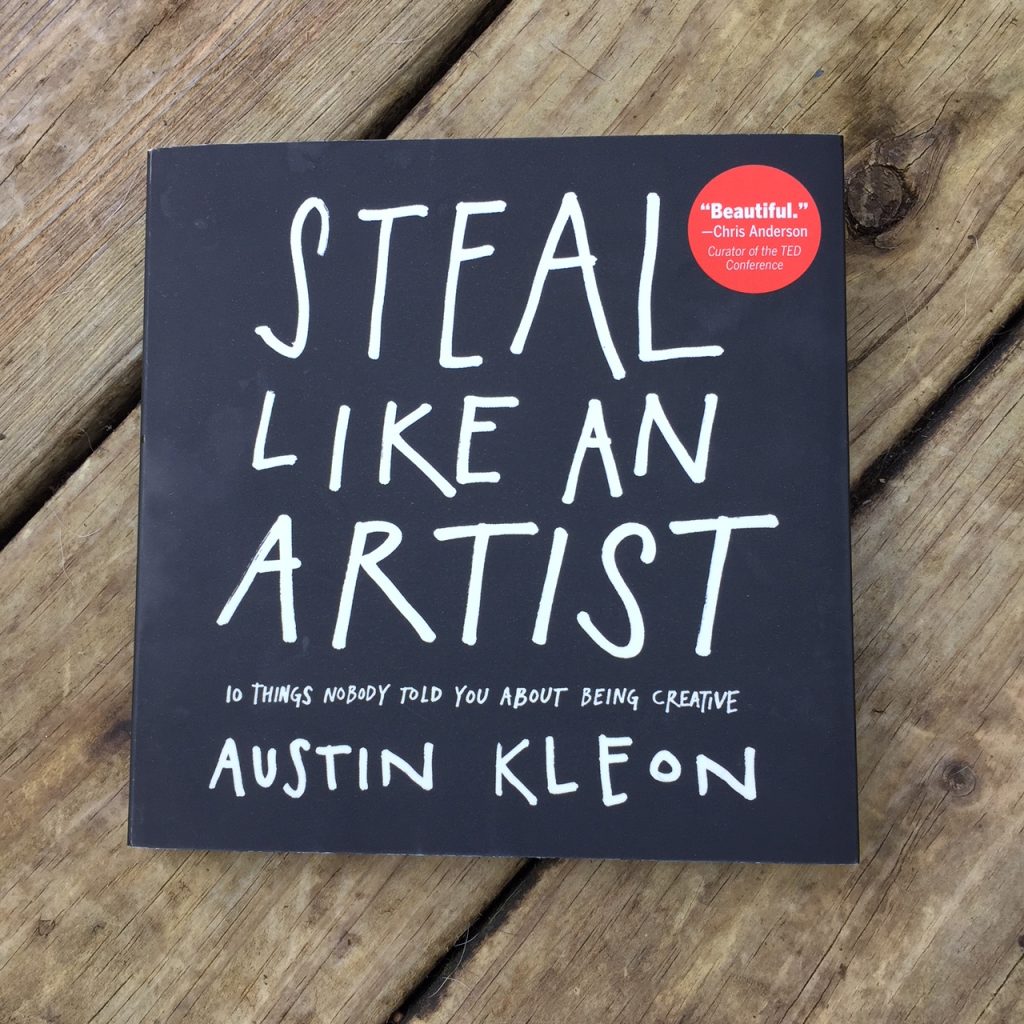
The very first time Jeff and I went to NYC together, we stopped by the World Trade Center. “Do you want to go up?” Nope. I hate heights. That was the first and last time I saw the building until it fell to the ground in September 2001 and took 2,606 people with it.
On Monday, I traveled to the 9-11 Memorial Museum. The Met houses paintings worth tens of millions, but the 9-11 Museum has TSA-level security, which is a fitting way to show how life has changed since then.
The entire thing is underground and covers much of the site of the original twin towers. You can see the original “slurry wall” built to contain the Hudson from the North Tower. There are pieces of steel twisted from the impact of Flight 11 with building, the carcass of a fire truck from Ladder Company 3 in the East Village, where all 11 firefighters reporting died, a broken ambulance, plane seatbelts, dusty shoes, and, curiously, an unbroken window.
Always a tough thing to enforce that requires constant nagging, photography is not allowed in the mausoleum-like interior spaces, which largely house some of the spectacular photographs of the day. You won’t want to linger long as there is a constant loop of TV footage from the day that made me feel ill. The only thing I wanted to capture in pixels was a fossil like lump called a composite. They are basically four or five floors of compressed material that remain un-excavated. It remained unexplained how many of them exist.
The space is open with no clear beginning and end, and those joining me on that hot Monday largely roamed in silence. The only point of levity were several walls of poster-sized New Yorker covers that really capture the zeitgeist of that year.




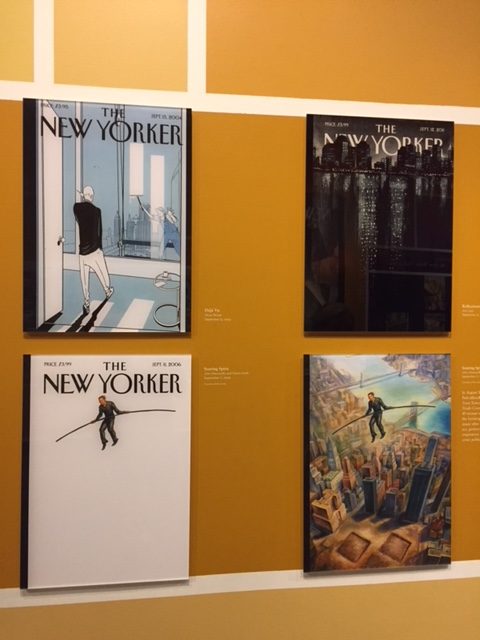
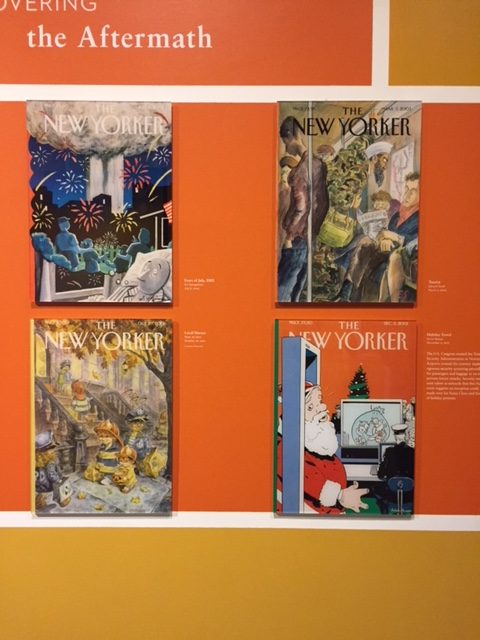

When I was 18, I left the part-time, amusement park job I had since I was 14 and moved to greener pastures – a job at a Coach outlet store. At the time the company was owned by Sara Lee Corporation, which then funded a college grant program that sent me through college and grad school loan-free. I also met some amazing people that are still my close friends. Not a bad gig.
While I was initially mystified at the devotion of Coach fans, I would quickly become one of them. I didn’t buy many bags then, but I’d acquire them in thrift stores and garage sales for decades after.
Soon after I left, the company was sold and the brand moved in a different direction – off-shore production, canvas materials, gaudy linings, and logos everywhere. I hated them. The book Deluxe: How Luxury Lost its Luster explains what happened to Coach and many other high end brands.
Most luxury brands are today owned by large conglomerates, who slowly acquired what had been small, family-owned companies and brought in new management, rung efficiency from every corner, advertised relentlessly, and moved production to lower cost regions. They introduced starter products like perfumes, scarves, and handbags to get first-time buyers to splurge on the brand. The assembly line efficiency meant major dollars in a category with already enviably high margins.
Author Dana Thomas covers every angle from handbags to perfume production to silk production and counterfeiting. Hermès bags are still made largely to order and by hand. Chanel No. 5 is the company’s most valuable scent, and unlike many perfumes, it contains over 70 ingredients. Chanel contracts one entire farm in France for just one ingredient in the formula. Many of the companies mentioned were founded in the 19th century in France and Italy and family-owned and operated. Hermès began by making saddles. They still do. Counterfeiting luxury goods is a lucrative business largely tied to organize crime, so resist the temptation to attend a purse party or peruse Canal Street and buy one. #recommended
I found this volume at a book sale in May. Cobbled together from obscure sources like The Big Ugly Review and some familiar ones, like Harper’s, by editor Lee Gutkind, a professor at the University of Pittsburgh, this volume was worth the $2 I paid just for the story Moby Duck, which is about a shipping container of children’s bathroom toys, all 28,800 of them, that was lost at sea.
The boat in question was traveling from Hong Kong to Tacoma on January 10, 1992. The toys slipped overboard at 44.7 degrees N, 178.1 degrees E. Shipping containers are stacked like legos on a boat deck, but if said boat rolls more than 35 degrees, then the containers can break lose and sail into the open sea. The water pressure will crack the casing as the container sinks.
About 18 months later, the toys started showing up on beaches in Alaska. The author traces the toys through small newspaper ads and beach combing community publications. The toys – a red beaver, a blue turtle, a green frog, and a yellow duck – would be bleached and changed by their time in the ocean but still recognizable as toys.
Throughout the story, the author explored the rise of popularity of the rubber duck (thanks Sesame Street), the evolution of children’s toys, and, especially, the huge amount of plastic in the Pacific Ocean, which is larger and deeper than the Atlantic with current patterns that form a dead zone where winds fall below 10 knots and lost garbage collects. The North Pacific Garbage Patch encompasses one million square miles of ocean.
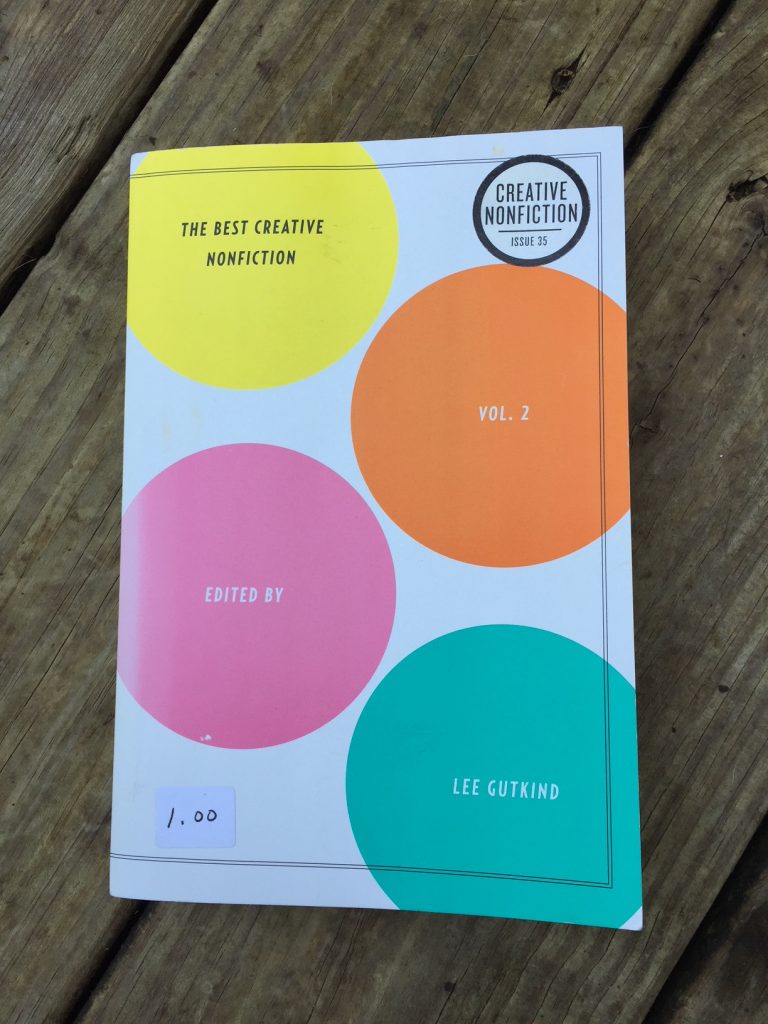
We’ve lived in our city duplex since 2005, and in our entire tenure, a fireplug middle-aged man named Al has been our neighbor. We have many fine neighbors on this street, but Al was our “attached” neighbor. Jeff complained about his chattiness, but I quickly remind him that he was the ideal neighbor – polite, quiet, helpful, and rarely home. (He worked nights.)
On Friday, I came quickly after a phone call at work from another neighbor, Dawn. “Al passed. When are you coming home?”
Al’s mother passed away about a year into our tenure on State Street. I believe she had cancer. I never spoke to her but saw her often in her mid-80s, white American car with “Mom’s Taxi” on the front plate.
Al’s younger brother followed a few years later, one of the early victims of the opiate epidemic. “He installed carpet,” Al explained once. “He got hooked when he was injured on the job.” Al found his body in a “pay by the day” motel he was staying at. They were to go fishing. Al later inherited his brother’s small boat, one of his only possessions.
Al’s dad was the only one left and a near constant presence at the house. He didn’t speak much, but you’d know him by his pipe smoke. He was quiet but quick to complain about change in the world or a health problem if you inquired. He passed last year.
We attended his funeral and learned he was a veteran of WWII in the Pacific theater. Al proudly showed off the medals and photos he inherited while also confiding that he could never do enough in his dad’s eyes.
He seemed energized that summer – up at all hours of the night and overly eager for conversation. He went out of his way to fix things for us or inquire into our home projects and lives. “He’s used to being a caretaker,” I explained to Jeff, “and now he has nothing to care for. He’s trying to be helpful.”
I didn’t see him much over the winter, but for a season associated with hibernation, this was nothing unusual. Dawn stopped me about a month ago and told me Al was depressed. I sent him a text message with no reply.
His cousin would tell me that Al had recently bought a gun. The time of death was 1:48 am Thursday night, the same time Baby Cow had started barking but then didn’t want to go outside. She sat on the dining room rug looking around like she had a superpower. “I’ve summoned my human, and she is here.” I remember the time but noted nothing myself other than the earliness of the hour.
Not much changed at his house in the 13 years we lived next to one another. He has the same cars and the same boat neatly winterized in the backyard. His garden hose has it’s own housing, and there are pots quietly stacked next to his patio. Several neighbors reported speaking to him on Wednesday, and one asked him directly if he was suicidal. He didn’t want to talk about it.
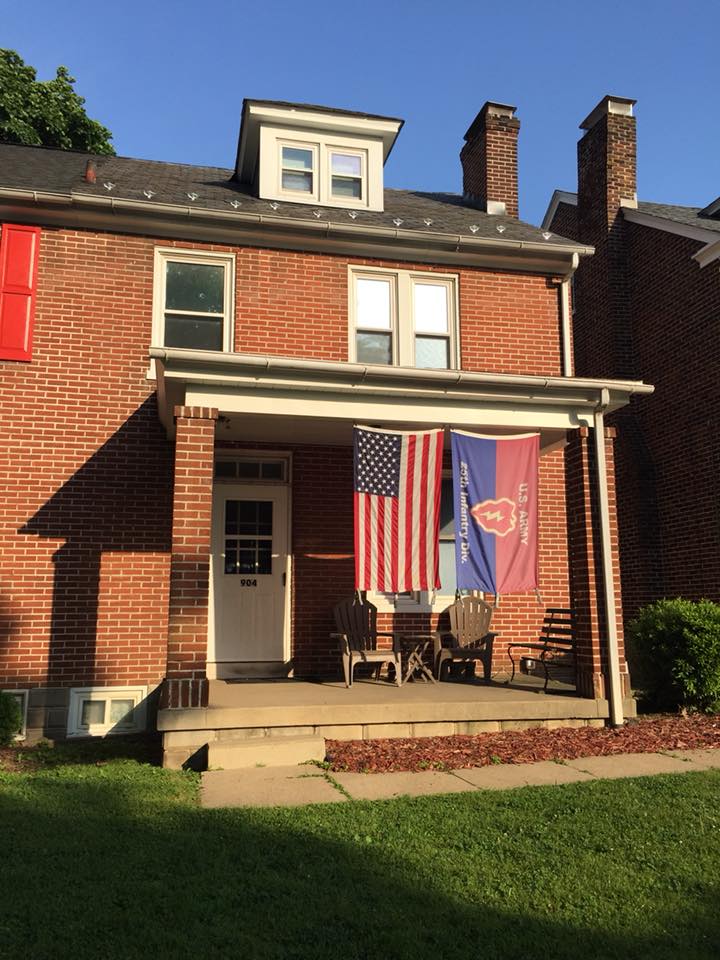
I work in marketing, and I’m fortunate to really enjoy working with our entire team. One individual who handles smaller accounts and ingredients came to us from a pharmaceutical company that closed nearby. Her name is Casey, and her background is in agronomy.
She’s a very good sales person – organized, empathetic, and quietly awesome. She also has the best DIY mentality I’ve ever seen. She lives in the southern part of the county in a rural area, buys from thrift stores, and does her own car repair. She’s a 20-something that can drive a manual transmission. What’s not to like?
She told me recently that her boyfriend has the same attitude. His ancient Jeep died on the way home recently, and he found a late 80s Mustang on Craig’s list that night that he hauled home to fix. She showed me a photo, and the car was in great shape for the year. My brother owned one just like it in the 90s. It needed just a few things to make it road worthy, which gave them both time to get the Jeep back on the road.
I admire her a great deal, and I admire her attitude and talent which gives her the confidence to dig in to any project.
I recently completed Buddhism and Modern Psychology by Professor Robert Wright on Coursera.org. In the supplemental material, one of the video lecturers was one between Wright and Paul Bloom on Bloom’s book How Pleasure Works: The New Science of Why We Like What We Like.
In it, Bloom talked about the essence of things. From a review of the book: “What matters most is not the world as it appears to our senses. Rather, the enjoyment we get from something derives from what we think the thing is.” Bloom argues that at the root of pleasure is our reading (or misreading) of the essence of something rather than the facts presented to our senses.
Like Wright, Bloom traces the origin of essence to natural selection. “We have evolved essentialism to help us make sense of the world, but now that we have it. It pushes our desires in directions that have nothing to do with survival and reproduction.”
Bloom argues that we endow everything including people and items with an essence that gives them a value. This is why a tape measured owned by JFK has more value than the humbleness of the object would suggest. It’s value is inherent in who owned it. It’s essence.
Essence works both ways. Bloom argues that clothing and other items owned by regular people have less value. They are herein tainted by being used.
I think Bloom’s argument is a intriguing one, and I find a lot to relate to. I’ve noticed that used items have far less market value when buying clothing at thrift stores and on eBay. Clothing of all types goes for a fraction of its retail value. Even unique pieces can usually be found with enough patience, and their value as determined by the market is far under retail. If you’re concerned about essence, then, by all means, buy things that have never been used. If you’re not, just wash them, and they’ll be yours.
Despite sharing the same rank for a season, my husband is a better tennis player than I am. He played sports in high school. I did not. We both work hard on our games, but I think he has the edge. He’s a wonderful student of the game. He watches videos. He reads books.
So when I decided to put much more effort into my game, I had to decide to give up on that ego and take his instruction. He’s not one to compliment anyone, and I’m historically someone who needs a little encouragement. I had to put that aside, and I did. I’ve been working on growing as a person, and taking advice and criticism is a big part of that growth. It’s not personal. Keep repeating that. It’s true.
Part of my commitment to getting a better game is just playing more matches. There is always a flutter of nervousness for me in a match. Always. I thought playing more could take that edge off, and it has. I committed to three teams and a night class this winter, and in retrospect, that was probably a lot. I struggled mightily on one team in particular, and Jeff asked to come watch.
My partner and I won, but it was kind of ugly. Afterwards, Jeff had an hour discourse on what I did wrong. One of the last things he said was, “your knees weren’t bent. You weren’t ready to move. In fact, no one on that court was ready to move. If you just do that, you’ll be better than 90% of the people out there.”
A lot of what he said clicked, but the knee bend stuck like a barnacle. Playing with your quads engaged will leave you with burning outer thighs, so I upped my yoga practice to compensate. The knee bend and ready position has the side benefit of giving me something to focus on. The improved concentration has also helped my game.
Sometimes we overlook the expertise of those close to us. We shouldn’t. It’s wonderful to have a personal coach and hitting partner with the kind of availability only a pro could dream about. As my game gets better, I’ve given back in the form of suggested drills and my own observations. We were 2-2 for the fall season, which isn’t too shabby. I see more great play in our future.